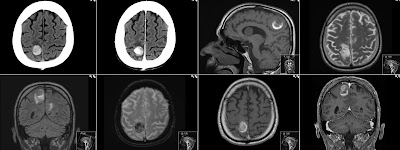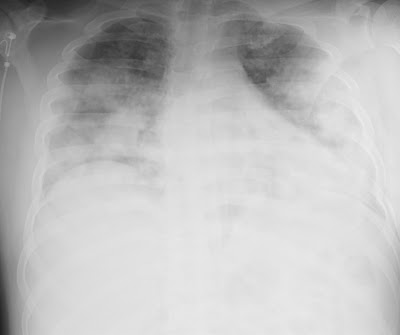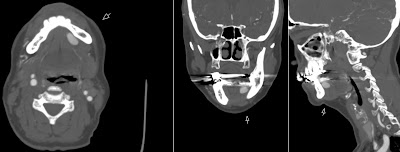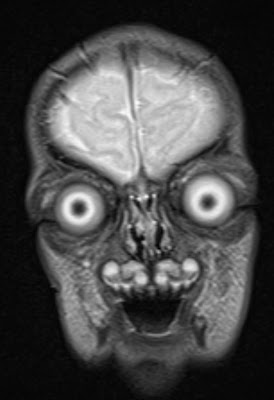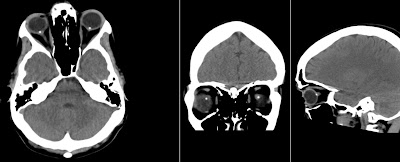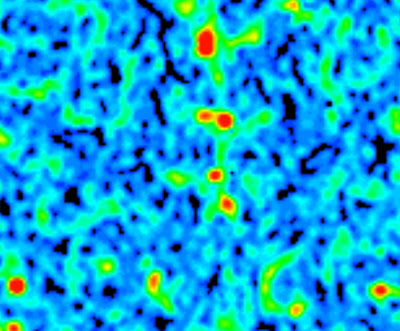Anterior Communicating Artery Aneurysm Rupture
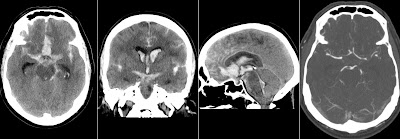
Massive hemorrhage from ruptured Anterior Communicating Artery (Acom) aneurysm with blood in basal cysterns, subarachnoid space and ventricular system. Note on the sagittal image delineation of the third ventricle, aqueduct and fourth ventricle with blood. CT Angiography (CTA) shows 3mm Acom aneurysm. Note dilatation of the ventricular system, particularly temporal horns on the first image. Intraventricular hemorrhage is causing acute hydrocephalus.

